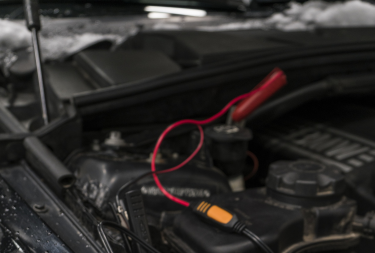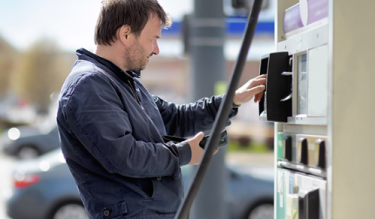

Welcome to Bumper to Bumper Radio!
Drive in anxious and cruise out confident with the best automotive information for your vehicle! Tune in to KTAR News 92.3 every Saturday from 11 a.m. to noon as Matt Allen helps listeners with their car problems. The show call in number is 602-277-5827.
Latest News From Bumper to Bumper Radio

In times like these when many of us are in quarantine and cities are in lock-down, you would think that our vehicles are naturally not the first thing on our minds. CTEK, a leading global brand in the care and maintenance of vehicle batteries, is however reporting an unprecedented number of inquiries from people all over the world, asking for advice on how best to look after their battery when their vehicle is parked for a long period of time.
Tony Zeal, Global Training Manager at CTEK said "We have taken so many questions from people wanting to make sure that they protect against a flat battery – a hassle they could do without – so that when they are able to use their vehicle again the battery is charged and the vehicle is ready to go."
Tony shares information and tips on what you need to consider and how best to look after your vehicle battery when your vehicle is not being used for longer periods of time.
A CTEK study has identified that as many as 51% of vehicles on the road today has a battery that requires attention – by that we mean it needs charging or replacing
Modern vehicles have lots of on-board computers and security systems such as alarms, immobilizers and trackers which means the battery can quickly die – by simply sitting on a shelf, a standard 12 V lead-acid battery will be unable to start a battery after just 6 months*, so imagine how much more quickly this will happen with all of those additional vehicle electronics!

Today’s national gas price average is $1.92. That is nine cents cheaper than last Monday, 48 cents less than a month ago and 81 cents less expensive than a year ago. On the week, pump prices continued to push less expensive with gasoline demand registering at its lowest point since 1993. The latest Energy Information Administration (EIA) weekly report puts demand at 6.7 million b/d – a nearly 30 year low – and it’s likely to push lower as Americans are urged to stay at home at least until the beginning of May.
“This week, market analysts are watching crude oil prices, which started to increase at the end of last week,” said Jeanette Casselano, AAA spokesperson. “However, given the low demand readings, increases in crude aren’t likely to have an impact on gas prices in the near-term.”
In addition to crude oil, market analysts are also watching refinery rates. The U.S. refinery utilization average is down to 82%, a low not seen since September 2017. Given the drop in crude oil and gasoline demand, which is expected to push even lower, refineries are reducing production in hopes this could help to balance the amount of gasoline supply in the country.
Quick Stats
The nation’s top 10 largest weekly decreases are: Wisconsin (-16 cents), Vermont (-15 cents), Idaho (-14 cents), Alaska (-12 cents), Iowa (-12 cents), Kentucky (-11 cents), Arkansas (-10 cents), Ohio (-10 cents), Michigan (-10 cents) and Arizona (-10 cents).
The nation’s top 10 least expensive markets are: Wisconsin ($1.43), Oklahoma ($1.47), Ohio ($1.55), Kentucky ($1.58), Michigan ($1.61), Indiana ($1.62), Mississippi ($1.63), Arkansas ($1.64), Texas ($1.65) and Iowa ($1.66).
West Coast
Although the West Coast region continues to have the most expensive state averages in the country, it is also seeing significant decreases, as crude prices remain low and demand for gasoline and crude oil decline. When compared to a week ago, Alaska (-12 cents) saw the largest decline. Hawaii ($3.30) and California ($2.96) remain the most expensive markets in the country. Washington ($2.68), Oregon ($2.63), Nevada ($2.55), Alaska ($2.40) and Arizona ($2.37) follow.
According to EIA’s latest weekly report, total gas stocks in the region increased from 30.97 million bbl to 34.06 million bbl last week. The significant increase in supply, alongside low crude prices and demand, will likely help to push pump prices lower in the region this week.

Car Buyers Are Embracing More Online Shopping Activities and Increasingly Putting the Brakes on Ride Sharing, Dealers Are Willing to Meet Car Buyer Needs Virtually
CHICAGO, March 30, 2020 -- Leading automotive digital solutions provider CARS Inc. (NYSE: CARS) announced today new insights from its research to determine the impact of COVID-19 on the U.S. automotive industry. The company found that while many dealerships are experiencing historically low foot traffic and many have closed showrooms completely, tens of millions of people are still actively engaged in car purchases online. Data demonstrates that nearly 80 percent of Cars.com's visitors are searching and viewing inventory with high intent to purchase1. However, these car shoppers are looking for alternative ways to connect with local dealerships in the current environment as America observes restrictions in order to contain the coronavirus pandemic.
"Our data shows continued engagement online with the car-purchase process as more Americans stay-at-home," said Alex Vetter, CEO of CARS Inc. "Though showroom visits are declining nationwide, the auto industry has the technology and digital tools available to meet shoppers where they are. Digital retailing, home-delivery options, increased comfort and reliance on chat tools to connect with shoppers in real-time and enhanced engagement with social channels are very valuable mediums for dealers to generate sales during this challenging period. Our automotive industry has always proven to be an incredibly resilient and resourceful industry. We are committed to helping car shoppers and dealerships navigate these unprecedented times with an array of dealer tools that are well suited to connect with the at-home shopper."
The research revealed three key trends impacting the automotive sector driven by the COVID-19 outbreak:

With the national average at $2.12, pump prices are, on average, 50-cents less than this time last year. Crude oil is the biggest driver of the less expensive gas prices. In the last week, crude oil prices dropped to $22/bbl – a low not seen since 2002. Crude oil accounts for nearly 60% of the retail pump price. When crude is cheap, gas prices follow suit.
“Typically gas prices start to trend more expensive at the beginning of spring, especially as motorists get out to enjoy the warmer weather and travel for spring break. That is not the case this year,” said Jeanette Casselano, AAA spokesperson. “With Americans urged to stay at home and practice social distancing to slow the spread of coronavirus, we are seeing less traffic on the roadways which will ultimately drive down demand, increase gasoline supply and push pump prices less expensive for the foreseeable future.”
Motorists do not need to rush to the pumps to fill-up. Currently, there is ample U.S. gasoline supply and no disruption to distribution at gas stations.
Across the country, state averages are less than $3/gallon except in Hawaii ($3.47) and California ($3.21). Twenty-nine states have gas price averages at $2.10 or less with Oklahoma ($1.71) carrying the cheapest in the country.
Today’s national average ($2.12) is cheaper on the week (-13 cents), month (-35 cents) and year (-50 cents).
Quick Stats
The nation’s top 10 largest weekly decreases are: Wisconsin (-24 cents), Oklahoma (-21 cents), North Dakota (-20 cents), Ohio (-19 cents), Michigan (-18 cents), Kentucky (-17 cents), Minnesota (-15 cents), Maine (-15 cents), South Dakota (-15 cents) and California (-14 cents).
The nation’s top 10 least expensive markets are: Oklahoma ($1.71), Ohio ($1.78), Wisconsin ($1.81), Kentucky ($1.82), Indiana ($1.83), Mississippi ($1.84), Michigan ($1.84), Texas ($1.85), South Carolina ($1.86) and Missouri ($1.86).
We would like to extend our sincere wishes that you all stay healthy and safe as we all work to get through this unprecedented time period together.
All of our Bumper to Bumper Radio Member Shops are taking all the necessary precautions to help prevent the spread of the COVID-19 (Coronavirus). The health and safety of our customers and employees are our top priority. We know that you depend on us to provide the service that you can rely on to keep your vehicles dependable and on the road.
Please check with any of our individual member shops as to their specific safety measures, policies and services they are providing, but know that virtually all of our Member shops are proactively providing additional safety measures to protect your health.
Services Include:





















